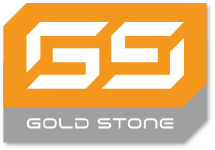December 19, Fujian Jinshi Energy Co., Ltd. efficient solar cell (a) project completion and acceptance ceremony in Jinjiang City, Fujian Province as scheduled. Public news shows that its production capacity of 100MW. The project efficient battery using HDT battery technology, mass production conversion efficiency of up to 22%, the standard PV module power can reach 320W, than the traditional polysilicon photovoltaic module power is about 20% higher.
Public information shows that Jinshi Energy Project is jointly invested by Jun Shi Electric (Hong Kong) Co., Ltd. and Jinbao Li (Quanzhou) Packaging Technology Co., Ltd. to plan the construction of the first domestic HDT solar cell production line. The project has a total investment of 330 million yuan, HDT efficient solar energy (a) project is located in Jinjiang City Economic Development Zone (Wuli Park), the production plant leased gold Poly (Quanzhou) Packaging Technology Co., Ltd. idle plant, an area of 31,000 square meters.
It is understood that, due to the larger initial investment, early production capacity is small, Jinshi energy HDT components manufacturing costs are higher, the current market price of about 3.8 yuan / watt, the future with the size of the continued increase and technological progress, the cost is expected to further reduce.
HDT (High efficiency Hetero-junction Double-sided Technology) solar cells are double-sided light receiving a highly efficient single crystal heterojunction solar cells, which is characterized by positive and negative sides of the battery can accept light, in order to enhance the battery Photoelectric conversion efficiency per unit area and total generating capacity. HDT batteries are symmetrical multilayer laminated structures, as shown in Figure 1.
HDT batteries use PECVD to form a very thin intrinsic silicon passivation layer and a P-type silicon doped layer on the front side of the N-type monocrystalline silicon wafer formed on the surface of the silicon surface, and then deposited a very thin intrinsic Silicon passive layer and N-type silicon doped layer, silicon film deposition after the completion of the use of PVD magnetron sputtering coating technology in the battery on both sides of the deposition of transparent oxide conductive film (TCO) and metal stack, and finally the use of metal The gate technology forms a metal electrode on both sides of the battery at the same time. All process processes for HDT batteries are carried out at temperatures below 220 ° C.
Jinshi Energy said the company gathered a group of researchers from the United States, Japan, Taiwan and other regions, has applied for more than 150 patented technology, to overcome a number of technical problems, making HDT project to achieve a successful production, become the first domestic Hundreds of MW-level independent intellectual property rights of efficient solar cell production line.
At present, the stone energy components have been Germany TUV and the National Photovoltaic Testing Center and other related certification, with efficient solar cells complete sets of equipment and technology line output capacity.
In the future, Jinshi plans to further integrate high-end R & D in materials, processes, core equipment and systems integration, integrate global R & D resources, establish a global supply chain cooperation system, and export complete HDT technology, equipment and products to the world. It is reported that the company plans to plan all six 100MW HDT battery capacity.
Jinshi Energy claims that HDT solar cell technology has the following advantages:
A. Low temperature process: low temperature process, the maximum does not exceed 220 º C, less process energy;
B. Heterojunction emitter: wide gap caused by high short-circuit current-Isc and high pressure Voc, the use of this technology cell conversion efficiency of the world record has reached 25.6%;
C. Low temperature coefficient: the battery power temperature coefficient is lower than -0.3% / ºC, more suitable for high temperature environment power generation;
D. Power generation stability: the use of N-type silicon wafer, there is no LID effect;
E. No silver paste gate process: the use of high conductivity metal into the gate process, improve conversion efficiency and reduce costs;
F. Flexible applications: the structure of the battery chip is suitable for the use of ultra-thin silicon as a substrate, the future can achieve true flexibility;
G. New component applications: double-sided absorption of the battery chip, suitable for the production of double glass components, can increase the power generation more than 10%.
